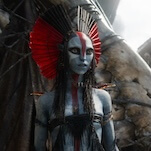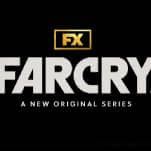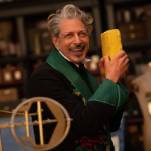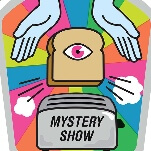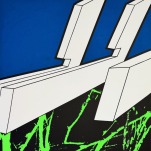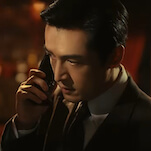Each week, Big Issues focuses on a newly released comic book of significance. This week, it’s The Unbeatable Squirrel Girl #9. Written by Ryan North (Adventure Time, The Midas Touch) with art by Erica Henderson (Jughead, Subatomic Party Girls), inks by Tom Fowler (Quantum & Woody, Green Arrow), and colors by Rico Renzi (Spider-Gwen, F.B.P.: Federal Bureau Of Physics) this issue showcases why this title is Marvel’s most ambitious, consistently entertaining ongoing series. (Note: This review reveals major plot points.)
This column has covered at length the many ways the superhero comics industry can be deeply frustrating to readers and retailers; this week’s Marvel Comics news stories are yet another example of why. On Tuesday, Comicbook.com revealed the new twist in the current Captain America: Steve Rogers storyline that seemingly revealed that the eponymous hero has been a deep cover Hydra agent since his conception. It should come as no surprise that the twist involves Steve Rogers having his memories manipulated to believe this Hydra development.
That initial cliffhanger reveal was greeted by significant furor from fans, many of whom took issue with a character created by two Jewish men becoming a member of a Nazi-like organization, and Marvel capitalized on the controversy. In an Entertainment Weekly interview, writer Nick Spencer said, “This is not a clone, not an imposter, not mind control, not someone else acting through Steve,” which fanned the backlash even though, as Captain America: Steve Rogers #2 confirms, the statement is false. Blatant misdirection in promotional interviews isn’t anything new, and it’s understandable why Spencer and Marvel were so committed to publicizing that there was a big change to Rogers’ essential character. They don’t want this reveal undercut by the obvious tricks that superhero comics employ in these types of situations, and many readers with a familiarity of superhero conventions guessed the path the story would inevitably take.
There’s the frustration of being lied to by a company that is doing whatever it can to sell books, but then there’s also the frustration of this story unfolding in a completely predictable way. Sam Wilson got demoted for this? (Yes, Sam Wilson is still Captain America, but sharing that title diminishes his place in the Marvel U, which is explained further in this DC Rebirth Big Issues.) Captain America: Steve Rogers is a competent superhero comic, but it’s also representative of what is keeping Marvel from moving forward as a superhero publisher: It highlights the company’s reluctance to commit to legacy characters, its eagerness to return to dusty narrative conceits, and its reliance on PR and hype to attract readers rather than delivering original, compelling storytelling.
The other big Marvel news this week ties directly into PR/hype, with Marvel unveiling the final promotional art for its new publishing initiative launching this fall. After “Marvel Now!”, “All-New Marvel Now!”, and “All-New, All-Different Marvel Now!”, the publisher is cycling back around and just using the “Marvel Now!” name again, which doesn’t bode well for the innovation of the comics that will be part of the initiative. This promotional image sees various Marvel characters divided into two camps: One features mostly white characters who have a greater presence in the Marvel Comics and Cinematic Universes (except for all those random Mercs For Money members), and the other features a more diverse group of younger, lesser-known characters who also happen to star in some of Marvel’s best titles.
There’s no question which group has the better lineup of comics. Books like Ms. Marvel, Moon Girl And Devil Dinosaur, The Ultimates, and The Unbeatable Squirrel Girl are far more imaginative and engaging than the titles represented by the characters standing behind Victor Von Doom. These are books that are exploring the opportunities for superhero comics to evolve and expand to reach a wider audience, which makes it all the more disheartening that these series don’t sell more copies. Some of the most interesting, forward-thinking work in superhero comics is often work that doesn’t sell, but these aren’t especially esoteric titles. They’re books with mainstream appeal; The Ultimates is perfect for the die-hard superhero fans that are responsible for a considerable percentage of monthly issue sales, and the other three are telling all-ages stories that will charm anybody who enjoys Pixar movies or Cartoon Network shows.
The Unbeatable Squirrel Girl is Marvel’s most ambitious title at the moment, and it’s especially impressive because it combines ambition with accessibility, introducing readers to the huge storytelling potential of comics in a way that isn’t alienating. (The best example of this is the Choose Your Own Adventure-styled The Unbeatable Squirrel Girl #7 from two months ago.) Writer Ryan North, artist Erica Henderson, colorist Rico Renzi, and letterer Travis Lanham (who is also responsible for the book’s delightful production design that includes a Twitter-inspired recap page) are crafting a consistently surprising, heartfelt, laugh-out-loud hilarious comic every single month, and Squirrel Girl is redefining what it means to be a superhero in this series.
As the title says, Doreen “Squirrel Girl” Green is unbeatable, which means she doesn’t have to resort to force to solve her problems. This week’s The Unbeatable Squirrel Girl #9 has her facing off against Mole Man, who interrupted her miserable date with a superhero truther last issue. While she gives him a good warning throw at the start, she backs off once she learns the reason why Mole Man holds a grudge. Once Doreen is able to track the sequence of events that led to Mole Man’s attack, she decides to apologize for the totally unintentional distress she’s caused him, and he’s shocked to discover a superhero who says sorry instead of throwing punches. Unfortunately, Mole Man has very little understanding of how to act in new social situations, and his shock quickly gives way to obsessive affection for Doreen.
Mole Man’s reason for attacking Doreen is presented via a page drawn by David Malki, best known for his Wondermark webcomic assembling Victorian illustrations and photos into jocular comic strips, and it’s a brilliant way of reflecting Mole Man’s deeply antiquated perspective through a visual shift. That commitment to capturing a specific point of view is a big reason why The Unbeatable Squirrel Girl is such a bold, distinctive read, and the book’s light-hearted, irreverent stories and bright, animated visuals are tied directly to the way the lead heroine views the world. North’s scripts are silly, but there’s a lot of thought that goes into the structure of that silliness, much like how Squirrel Girl looks goofy on the surface, but has a big brain full of knowledge driving her actions.
Henderson is nominated for a Best Penciller/Inker Eisner Award this year for her work on The Unbeatable Squirrel Girl and Archie’s Jughead, and her remarkable work on both titles has sent her skyrocketing up the ranks of comics artists. Henderson is the total package: she has a firm handle on facial expressions and body language, a detailed and diverse design sensibility, and is equally skilled with bombastic spectacle and intimate character moments. All of these strengths can be seen in her artwork in The Unbeatable Squirrel Girl #9: The issue begins with a quiet, increasingly awkward conversation between Squirrel Girl and Mole Man, builds to a dynamic action sequence pitting Squirrel Girl and Koi Boi against a horde of Moloids, and ends with Doreen and Nancy strolling through the streets of New York City to discover that Mole Man has sunk the Empire State Building 1,240 feet underground.
North’s script gives Henderson a lot to cover (this is a dense book), but she accomplishes it all with clarity, style, and a smooth mix of drama and humor. Rico Renzi is essential to this book’s refreshing aesthetic, and his vivid, minimally rendered colors make Henderson’s linework pop while also reinforcing tonal shifts in the script. He uses a restrained palette in the opening scene to create a calmer atmosphere for the chat, but turns up the contrast as Mole Man becomes more aggressive and forces Doreen to fight back. One of the most effective moments in the issue is the transition from the splash page of Mole Man proposing to Squirrel Girl (“Will you be my Mole Ma’am?”) to the panel showing the stunned faces of Nancy and Koi Boi, and their reactions to Doreen’s story are amplified by the chaotic lime green pattern on the wall behind them, a visual representation of their confusion in that moment.
This week’s issue features a new addition to the art team in inker Tom Fowler, and partnering Henderson with an all-star talent like Fowler further elevates the book’s visuals. Joe Rivera inking Joe Quinones on Howard The Duck has a similar impact, and both of these books share an editor with a keen eye for finding complimentary artistic talent. Wil Moss is editing some of Marvel’s best books, including Black Panther, The Mighty Thor, The Ultimates, The Vision, and Patsy Walker, A.K.A. Hellcat!, and he’s making smart editorial decisions that are keeping these books fresh and exciting every month.
The recent Squirrel Girl/Howard The Duck crossover may not have done much for sales, but it united two creative teams that brought out the best in each other and had a lot of fun doing it. Moss has also made some truly inspired decision with fill-in artists on his books, putting Natasha Allegri on Hellcat!, Rafa Garres on The Mighty Thor, Christian Ward on The Ultimates, Michael Walsh on The Vision, and Kevin Maguire on Howard The Duck. (It will be a shame if Chip Zdarsky and Kevin Maguire don’t find another opportunity to collaborate again, because they are meant for each other.) Moss is looking to the future with his titles, and he was also the editor of Marvel’s only solo series with an LGBT lead: Angela: Queen Of Hel. It would be nice to see Moss’ educated, progressive approach embraced by other Marvel editors, but it’s still very cool to see characters like Patsy Walker, Howard The Duck, and Squirrel Girl treated with this level of editorial respect.
Squirrel Girl doesn’t sell exceptionally well in single issues, but it’s been a big success in collected editions, which is probably why Marvel is releasing a Squirrel Girl original graphic novel, The Unbeatable Squirrel Girl Beats Up The Marvel Universe!, in October. That’s a smart move from Marvel to capitalize on the growing market of graphic novel readers, many of whom are young girls that will find much to appreciate in this series. The letters page shows that this book is resonating with girls, who send in fan mail and pictures of their Squirrel Girl cosplay, and the series’ general presentation is one that can make a parent feel safe in handing it to a child.
There’s even a subtle educational element in The Unbeatable Squirrel Girl, but anything educational is always surrounded by humor so it never feels like the creative team is trying to make readers learn. I used “eponymous” at the start of this piece because the headshots page of this week’s Squirrel Girl reminded me that it works as a great replacement for “titular,” and I know all about the extinction and revival of tree lobsters thanks to last month’s issue. Above all else, The Unbeatable Squirrel Girl is pure, concentrated fun, the kind that you don’t get all that often in superhero comics anymore. It can be very childish, which makes it ideal for kids, but the team’s craft and intelligence imbue the book with a creative maturity that gives readers of all ages something to enjoy. Superhero comics aren’t going to get any less frustrating any time soon, but at least for the time being, The Unbeatable Squirrel Girl is here to offer salvation.



























